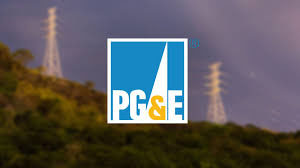Corporate news
California Cap-and-Trade program continues to reduce the state’s dependence on fossil fuels and benefits PG&E customers
Oakland, Calif. — In October, millions of eligible residential and small business customers will receive the California Climate Credit on their Pacific Gas and Electric Company (PG&E) electric bill. Customers do not need to do anything to receive the credit.
Residential households with an active electric account will receive a $55.17 electricity credit, the same amount they received in the spring. The semi-annual electricity credit was first delivered in April, in addition to an $85.46 annual natural gas credit for residential customers with a natural gas account. Total combined consumption credits on customer bills in 2024 total $195.80.
Eligible small business customers will receive the electricity credit in October, bringing their total bill credits for 2024 to $110.34.
“This credit is a win-win for our customers. The California Climate Credit helps lower customers’ energy bills and reduces our state’s greenhouse gas emissions,” said Vincent Davis, PG&E’s senior vice president of Customer Experience.
The California Climate Credit is part of the state’s efforts to combat climate change, and is distributed by PG&E to customers as directed by the California Public Utilities Commission (CPUC). The California Climate Credit is a direct result of the state’s nation-leading Cap-and-Trade Program, which requires polluters to pay for climate pollution. The bill credit is designed to help utility customers transition to a more sustainable future.
In addition to the California Climate Credit, customers are encouraged to explore other ways to save energy, reduce monthly bill costs, and help build a sustainable future.
Assistance Programs for Income-Eligible Households
– California Alternate Rates for Energy (CARE): Provides a monthly discount of 20 percent or more on gas and electric bills.
– Family Electric Rate Assistance (FERA): Provides an 18 percent monthly discount on electricity for households with three or more people.
– Energy Savings Assistance (ESA): Provides energy-saving upgrades at no charge.
– Low-Income Home Energy Assistance Program (LIHEAP): A federally funded and state-supervised assistance program that provides a one-time payment of up to $1,000 on past-due bills to help low-income households pay for heating or cooling their homes.
Other programs include Medical Baseline which offers a lower monthly rate for customers with certain medical conditions.
To learn more ways to manage your monthly bills and prepare your home for colder temperatures, visit: Save Energy and Money.



